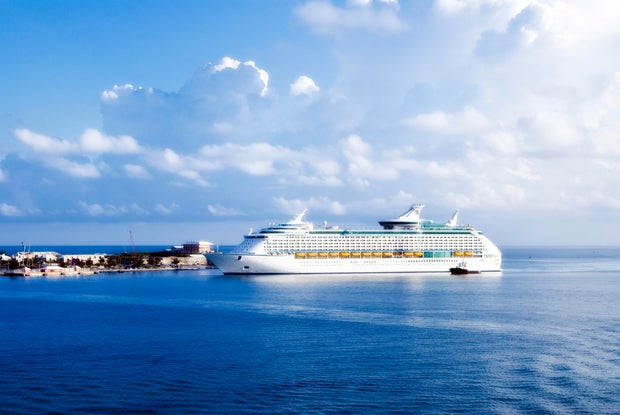CBS News
Home insurance costs — already soaring — are likely to keep climbing. Here’s why.

Insurance companies are jacking up their premiums on homeowners to account for their rising losses from storms like Hurricane Beryl.
Although that will take a financial toll on millions of Americans, it could mean big profits for property and casualty insurers like Allstate and Progressive in the coming year. Investors have bid up shares in the sector roughly 19% so far this year, outpacing the S&P 500’s 17% gain.
Meanwhile, keeping homeowners’ insurance has become increasingly challenging for many people, particularly those who live in the growing number of areas around the country prone to natural disasters. For example, Oklahoma residents saw their home coverage costs surge 42% between 2018 and 2023, while rates in Arkansas and Texas soared 32.5% and 60%, respectively, according to an analysis from S&P Global.
Insurance rate hikes have long been a way for property insurers to offset the cost of catastrophic events. Hurricanes account for most insured catastrophe losses, according to investment research firm CFRA. Hurricane Ian in 2022 is a reminder of the risks facing insurers. It was among the costliest storms in U.S. history at just over $118 billion, according to National Oceanic and Atmospheric Administration. Hurricane Katrina in 2005 was the costliest hurricane in history, with total losses of $200 billion.
Double-digit increases
Across the U.S., most insurers lifted their rates for homeowners’ coverage by double digits last year, according to S&P Global. For instance, Progressive’s rates rose 10.4% in 2023, up from a 2.9% hike the previous year; Allstate’s rates jumped 10.2%, up from 4.3% in 2022.
Affordable housing providers, in particular, are facing sharply higher premiums — nearly 1 in 3 policies experienced rate increases of at least 25% in the most recent coverage renewal period, according to one analysis by a coalition of housing organizations.
The U.S. experienced 28 separate billion-dollar weather and climate disasters in 2023, the most ever, according to NOAA. That surpassed the previous high of 22 such events in 2020.
The current hurricane season is already one for the record books despite just getting underway. Beryl, the second named storm of the season, became the earliest storm to develop into a Category 5 hurricane in the Atlantic. NOAA is forecasting an above normal season with up to 25 named storms, up from 20 named storms and seven hurricanes in 2023.
That could drive home insurance costs even higher.
“If this grim forecast comes to fruition, it will likely buoy pricing for many lines of property-casualty insurance and reinsurance, providing certain underwriters’ shares with a catalyst,” CFRA analysts said in a report.
Property damage from a natural disaster “is one of the largest financial risks” a homeowner can experience, according to a May study by the Federal Reserve. Almost 2 in 10 U.S. adults reported being financially impacted by a natural disaster or severe weather event in the past 12 months, the study found.
Insurers are also reducing their exposure to outsized losses by cutting their business in disaster-prone states like California and Florida, with major insurance companies including Allstate and State Farm no longer renewing policies in extreme-weather areas. Farmers Insurance pulled out of the Florida market in 2023, while State Farm is scaling back coverage in California.
AAA last year also decided not to renew some policies in Florida, a state that has seen an increase in powerful storms and coastal flooding. Homeowners — who depend on their insurance policies to help with the steep price of paying for damages to their property in the event of accidents and bad weather — are forced to find another insurer at a higher premium when insurers say they’re backing out.
Highest premiums in two decades
The industry has been raising premiums for about six years now, CFRA said. Cumulative rate increases over the years have compounded pressure on homeowners. Premiums for property and casualty insurance are now at their highest levels in more than two decades, according to the U.S. government data from the producer price index.
As a result, Wall Street expects Progressive’s earnings to nearly double in 2024 after jumping by 50% in 2023.
“We got ahead of the curve as far as pricing.” said Progressive CEO Tricia Griffith, during a May conference following its first quarter report. “We’re seeing that with our growth and hope to continue to see that.”
Analysts expect Travelers to report a 36% jump in 2024 earnings per share following a modest gain in 2023. Allstate’s profit is expected to skyrocket compared to weak growth in 2023 as it moves past the big cost impact from Hurricane Ian.
CBS News
Winds still driving Mountain Fire that’s destroyed hundreds of homes in Southern California

Watch CBS News
Be the first to know
Get browser notifications for breaking news, live events, and exclusive reporting.
CBS News
Kindness 101: Celebrating individuality with a young green hero

Watch CBS News
Be the first to know
Get browser notifications for breaking news, live events, and exclusive reporting.
CBS News
Royal Caribbean cruise ship rocked by rough weather, images show damage

Bad weather rocked a Royal Caribbean Crusies ship near Spain on Thursday night, causing damage aboard the vessel and requiring the ship to make an unexpected stop to allow a guest to medically disembark.
The Explorer of the Seas was traveling from Barcelona, Spain to Miami, Florida, according to CruiseMapper, a website that shows the position and routes of cruise ships.
John Greim/LightRocket via Getty Images
The vessel was near Tenerife, the largest of Spain’s Canary Islands, when it was hit by an “unexpected wind gust,” Royal Caribbean Cruises said in a statement.
The wind caused the ship to experience “sudden movement,” the cruise line said.
Jonathan Parrish
One person aboard the ship described the movement to CBS News as a “listing,” which means the vessel is tilted to one side. Photos show items knocked down, shattered bottles in a bar area, and other mild damage from the incident.
Jonathan Parrish
The cruise line said one passenger was injured and “requires additional medical care.” The ship is making a stop in Las Palmas, Spain, for a medical disembarkation. The cruise line did not offer any additional information about the unidentified passenger’s condition.
The Explorer of the Seas is a 1,020-foot vessel that can hold up to 4,290 guests and 1,185 crew members, according to an Royal Caribbiean Cruises fact sheet. It includes an ice skating rink, a mini-golf course and a rock climbing wall on its fifteen passenger decks. It is registered in the Bahamas and has been sailing since 2000.









